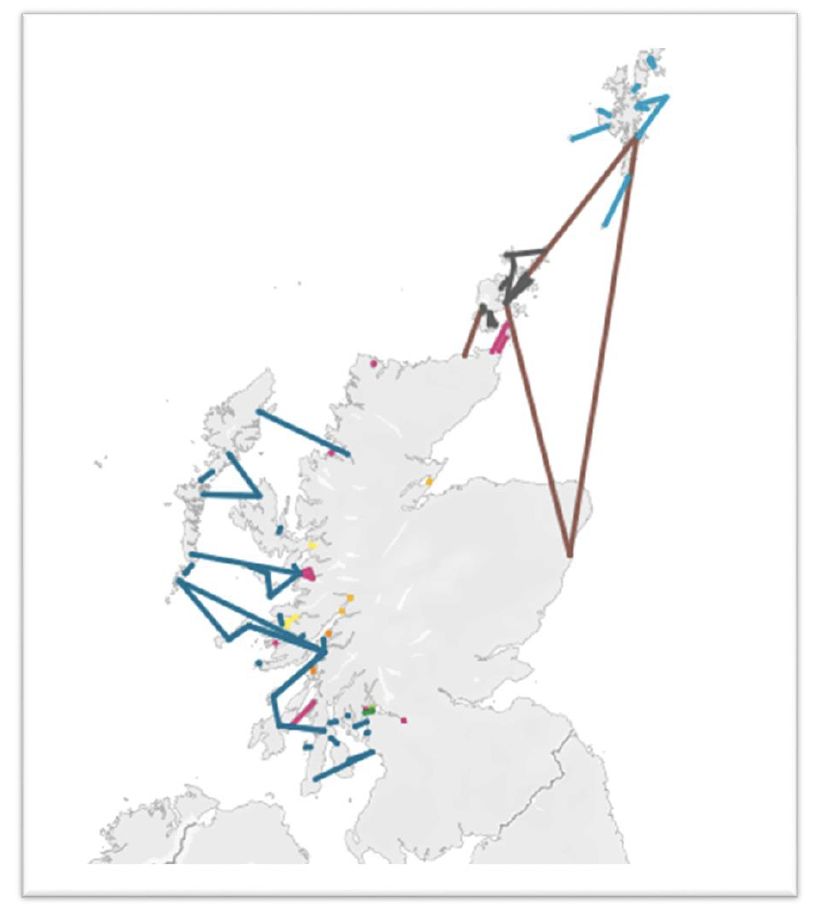Packaging - extended producer responsibility: island communities impact assessment
Island communities impact assessment (ICIA) for the introduction of extended producer responsibility (EPR) for packaging.
Impact 2: The storage and transportation of packaging recycling and waste off-island may require additional transport capacity.
Background
62. The aims of packaging EPR include an increase in the recyclability of packaging placed on the market, and a subsequent increase in the amount of packaging collected from recycling. This is not predicted to be new tonnage, rather a shift in material from the residual waste bin into recycling collections. This will be driven by recyclability improvements in some packaging formats which shift to more easily recycled materials, an improvement in communications so households are better informed and more motivated to recycle correctly, and the implementation of service changes that ensure efficient and effective services.
63. The screening report identified storage and transportation of waste and recycling off-island as a potentially significant adverse impact.[33] This is because of the relatively higher cost of building storage facilities on islands, and the constrained capacity on ferries for movement of waste.
64. The feedback gathered suggested that this concern goes beyond capacity on individual ferries, which was identified as an issue for both inter-island and island-mainland ferries. The need to consider disruption and the need for interim storage capacity on the islands were also raised.
65. Figure 1 illustrates the ferry operations in Scotland, both inter-island and island-mainland.

66. Transport Scotland indicated that the total number of routes is difficult to confirm, as there are a number of operators, including local authorities, grant-funded services and commercial operators across Scotland of varying levels of scale, seasonality and publicity. Transport Scotland subsidises almost half of the ferry routes in Scotland (32 of 66). These are mainly covered by two major contracts, Clyde and Hebrides Ferry Services (CHFS) and the Northern Isles Ferry Services (NIFS). As part of the National Transport Plan, the ferries plan (2013-2022) [35] will be replaced by the Islands Connectivity Plan [36] which will set out how ferry services, supported by other transport modes, will be delivered and strengthened, working towards a long-term vision, and supported by clear priorities and defined outcomes.
67. The ICIA undertaken for the introduction of Scotland’s Deposit Return Scheme highlighted that ferry capacity was restricted on a small number of routes.[37] If service improvements towards a more efficient and effective service, such as more material segregation, resulted from the changes to packaging EPR, it is likely that more capacity would be needed for recyclate collections and less for residual collections. There should be a direct correlation between the reduction in residual waste and increase in recycling.
Mitigation measures
68. The introduction of packaging EPR is not expected to increase the overall amount of waste that will arise in island communities but is expected to change the relative proportions of residual and recycling. It is therefore expected that the relative capacity required for each waste stream will change, with the same, or a slightly reduced, capacity requirement per year.
69. It is worth noting that packaging EPR is also intended to remove unnecessary packaging from entering the market. In that respect, overall waste arisings may reduce.
70. However, the scheme administrator should be mindful of transport capacity, to ensure that there are not unintended consequences for island authorities.
Contact
There is a problem
Thanks for your feedback